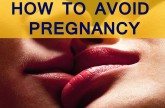Mostly children are born with an under-developed tear duct that requires a surgical treatment called tear duct surgery. Under-developed ducts may lead to tear duct blockage and excess tearing and infection.
The blocked tear ducts can be cured on its own without any surgical treatment in most of the cases with time as your baby grows. More than 90 % of the cases are cured on its own. A tear duct is considered as blocked when your eye’s drainage system for tears is either partially or completely obstructed.
Tear Duct surgery
Blocked tear ducts can be cured surgically by the following methods:
-
Lacrimal probing
Lacrimal glands are the almond shaped glands present in the outer section of the orbit of your eye. Lacrimal glands are responsible for producing tears that will flow into lacrimal sacs. Lacrimal probing technique makes use of lacrimal probes during the surgery.
In the initial step a surgical probe is inserted in the duct to remove the blockage. In the next step, a small tube containing tracer chemical like fluorescein is inserted into the duct to make sure the surgery is successful.
2. Dacryocystorhinostomy
When lacrimal probing fails, your doctor may recommend you for dacrocystorhinostomy (DCR). The main aim of dacrocystorhinostomy (DCR) is to bypass the obstructed nasolacrimal duct that will allow tear drainage directly into the nose from lacrimal sac. A small incision is made between your eye and nose for free flow of tears through the nasal passage.
It is recommended to get the blocked tear ducts treated at the earliest to avoid complications. Different surgical procedures can be used in cases when the blocked tear ducts are not cured with time.

















